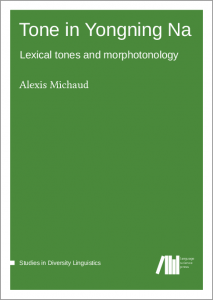Language Science Press provides books as Open Access, but we also strive to make the whole publication process more open. Our software is open source, the Latex-code for all our books is openly available, and our bibliographies are on Glottolog.
provides books as Open Access, but we also strive to make the whole publication process more open. Our software is open source, the Latex-code for all our books is openly available, and our bibliographies are on Glottolog.
One aspect of this openness is Open Review. The idea is that instead of two blind reviewers, the whole community can comment on a new manuscript and point out merits and possible improvements. A discussion of the theoretical axes along which Open Review can be differentiated can be found here; a report of practical experiences by Stefan Müller is here. At the time Stefan wrote his report, the technical infrastructure needed for doing Open Review was not fully in place yet, but now we are happy to announce that we will start Open Review as we intend it to be. Our first book to enter this Open Review stage is “Tone in Yongning Na: Lexical tones and morphotonology“.
Yongning Na, also known as Mosuo, is a Sino-Tibetan language spoken in Southwest China. This book provides a description and analysis of its tone system, progressing from lexical tones towards morphotonology. Tonal changes permeate numerous aspects of the morphosyntax of Yongning Na. They are not the product of a small set of phonological rules, but of a host of rules that are restricted to specific morphosyntactic contexts. Rich morphotonological systems have been reported in this area of Sino-Tibetan, but book-length descriptions remain few. This study of an endangered language contributes to a better understanding of the diversity of prosodic systems in East Asia.
Regarding the axes established in the previous blogpost, this setup positions itself as follows:
- anyone can comment
- comments are not anonymous or anonymized
- comments are post-acceptance (the book is already accepted)
- comments are pre-publication (the comments will be incorporated in the final version)
- both granular comments (typos etc) and global comments (sectioning etc) are possible
We are happy to cooperate with Paperhive on this occasion. The final version will eventually be the primary version on Paperhive, but previous versions will still be available
Have a look the Open Review version of Tone in Yongning Na. Comments welcome.

A big Thank You to Sebastian and the whole Language Science Press team for this wonderful Christmas present! I’m a happy author.
Two quick notes for readers:
(i) The draft that is currently open for you to review has a few unsightly page breaks and line breaks: for instance, the word “construction” begins at the end of page 144 (“construc-“) and the ending (“tion”) is orphaned on page 147. Some examples are also split over two pages. And a few lines spill into the margins. Please kindly disregard these issues concerning page breaks and line breaks: we’re aware of those, but page breaks and line breaks will only be finalized at the very end of the typesetting stage.
(ii) It seems that the PDF made available on the reviewing interface, PaperHive, is not searchable. It makes it hard to navigate the volume. In case you struggle with this, you can download the (searchable) PDF at the following address:
https://www.dropbox.com/s/nekau4g6q91tg6t/109ToneInYongningNa_Draft_21Dec.pdf?dl=0
You can then EITHER provide your comments by logging in to PaperHive and locating the places you have comments about, OR send me comments by e-mail (alexis.michaud@cnrs.fr). All comments will be gratefully acknowledged whether transmitted through PaperHive or by e-mail.